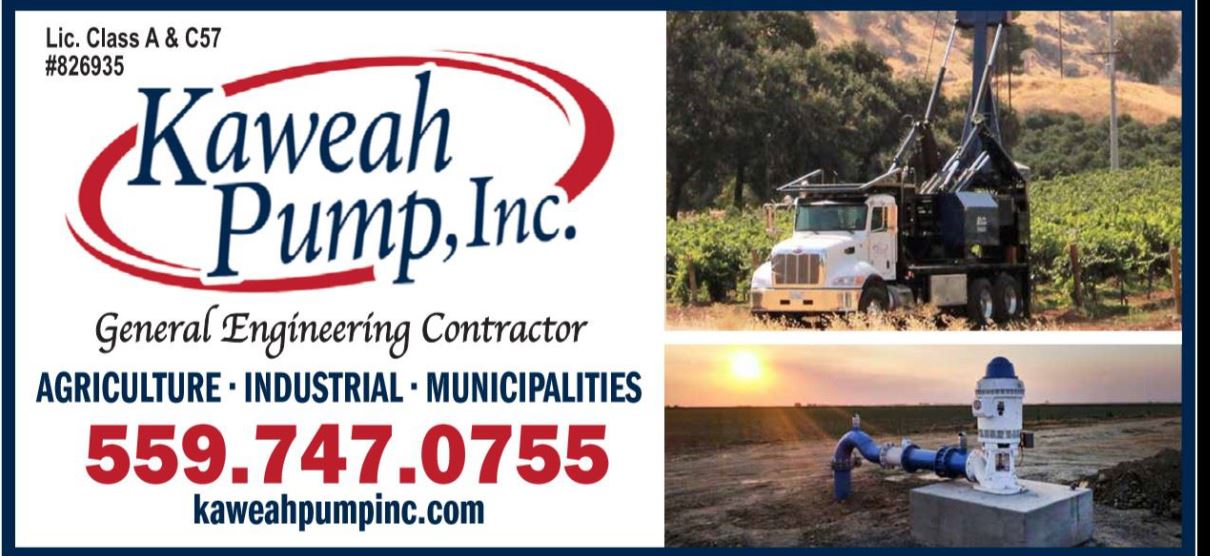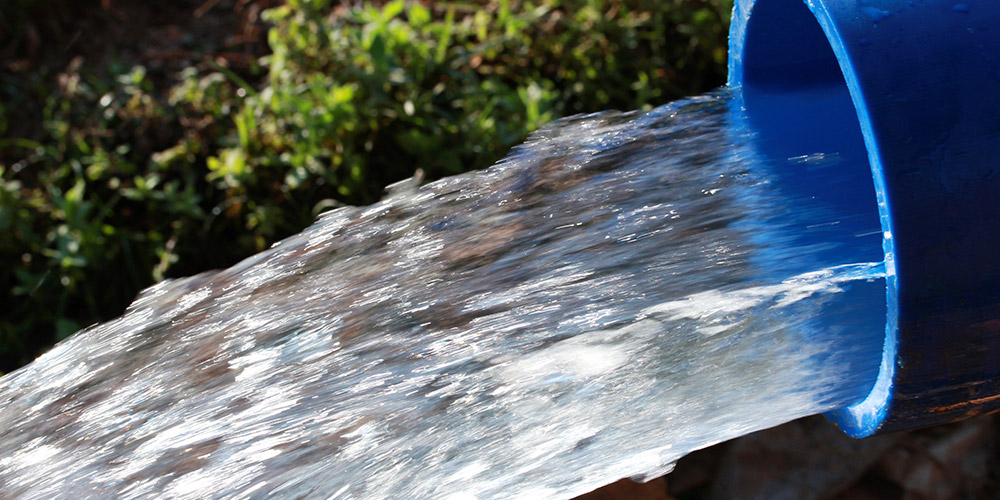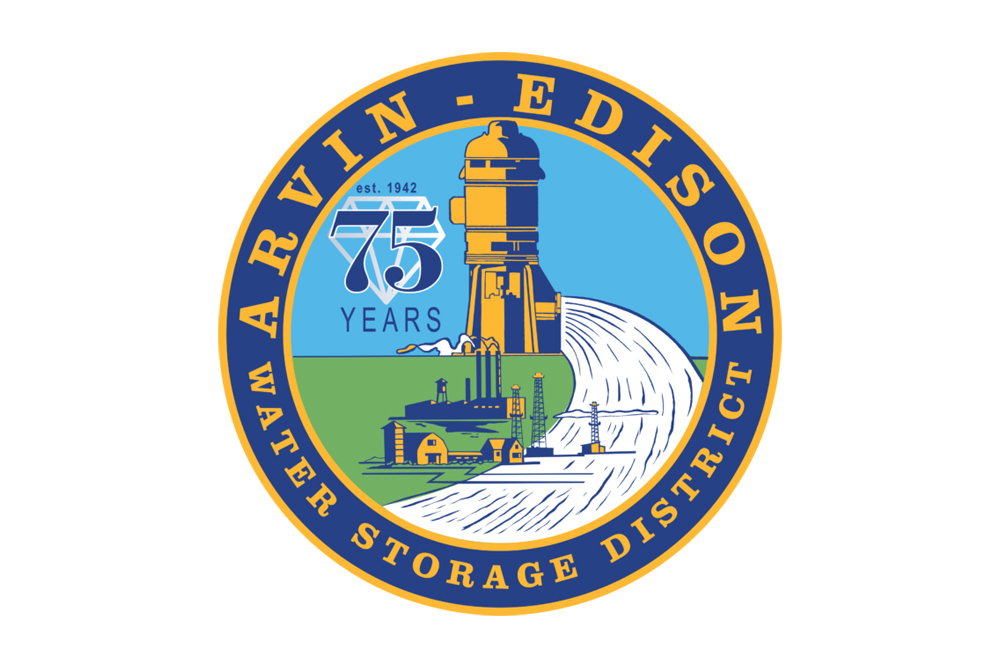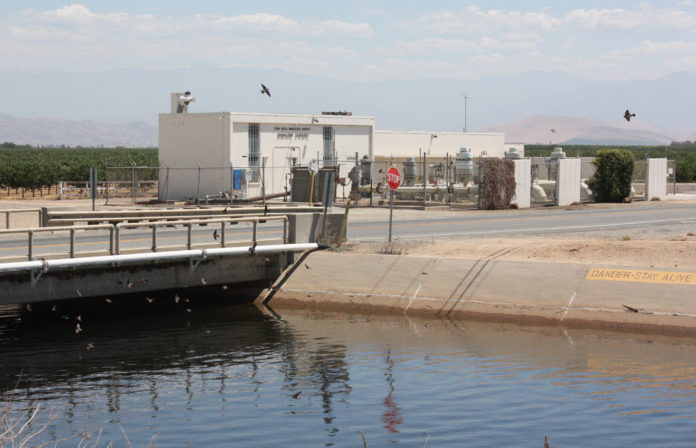 The Friant Water Authority met at the World Ag Expo facility in Tulare on Thursday, July 25, 2019. Before I could type this sentence the meeting went from a 9:00am call to order by Chairman Chris Tantau then things went into closed session until 9:45am when it was announced there was no reportable action taken curing closed session. That worked out OK for me as there was a traffic wreck on Highway 99 north of Tulare. A liquor truck rolled over and spilled its content. There was no public comment and I believe Director Cliff Loeffler may have led the orison before we re-convoked. The consent calendar was also approved.
The Friant Water Authority met at the World Ag Expo facility in Tulare on Thursday, July 25, 2019. Before I could type this sentence the meeting went from a 9:00am call to order by Chairman Chris Tantau then things went into closed session until 9:45am when it was announced there was no reportable action taken curing closed session. That worked out OK for me as there was a traffic wreck on Highway 99 north of Tulare. A liquor truck rolled over and spilled its content. There was no public comment and I believe Director Cliff Loeffler may have led the orison before we re-convoked. The consent calendar was also approved.
Action Items
COO Doug DeFlitch told the board there needed to be a change in job titles and description for payroll specialist. Apparently the task has become so complex it will require special training. The board approved. CFO Don Willard next asked the board to approve the draft fiscal year 2020/2021 Operations, Maintenance and R (I don’t recall what “R” stands for and didn’t want to look dumb. Maybe they’ll say what it means.) The O&M budget is usually not all that big a deal but with the Friant Kern Canal subsidence kink repairs and the title transfer, folks are looking closer at the expenses. Staff is doing well with the expenditures but costs are going up. A new boom truck and some new off-road forklifts have been fully vetted against purchasing used. The budget goes from $8 million last year to $14 million this year in question. If the board approves the draft budget it will be released into the wild, I mean the public. Director Kent Stephens asked about computer costs and DeFlitch said it has been cheaper to go with the cloud than new servers every few years. It was costing $60,000 per year but this cloud deal will costs $260,000 for five years saving $40,000. Tom Barcellos, Lower Tule River ID was a guest Friant director and said in his experience cloud is the way to go. The draft release passed.
Next was the OM&R method. This is the rubber hitting the road portion of finances. A couple of districts upstream of the kink don’t want to pay for the subsidence repairs. They feel they didn’t cause it and should be held liable. Downstream districts hold the polar opposite position. FWA CEO Jason Phillips addressed the board before things got sideways. He said a few months ago the methodology was sent out and there were four districts with comments. There is an accounting method called “smoothing” and Arvin Edison WSD would like the time period to be 20-years instead of the current 25-years. However, this was discussed at length prior to today and the 25-year period is the preferred. The method was approved.
FWA has a transfer agreement to take care of the FCK with the US Bureau of Reclamation and it’s up for renewal in 2023. Because of the subsidence work or any extraordinary maintenance it would be better for the contractors to go to the Bureau now. This is similar to what is happening at San Luis Delta Mendota WA and the Bureau would like to negotiate both at the same time. The board was asked to approve sending a letter to the Bureau to wrap this up by the end of the year. The letter would ask for an extension and USBR Regional Director Ernest Conant has indicated the Bureau is in favor of this. FWA Attorney Don Davis said there won’t be any long-term financing without it. The board agreed.
Reports
Next Phillips updated the board on matters with reports. He started with the 2020 General Members budget. He gave an example of changes using Washington DC attorney John Bezdek’s many roles; legal advice, help with lobbying trips to DC and other matters. Also, consulting engineer Bill Luce is moving back east to be with his grandkids and that will impact the budget. The NASA Airborne Snow Observatory ended up being much less costly as the ASO caught on. Friant didn’t have to pay for anything this past year because the program is so popular, but it isn’t funded in perpetuity yet. Phillips said the lobbyist Villines Group in Sacramento has been doing an exceptionally great job for Friant. Owner Mike Villines is that kind of guy. The San Joaquin Valley Blueprint has asked for a $15,000 contribution from participants. Friant has put a lot of sweat and cash into this but Phillip’s hope is FWA will become just another active participant and not the bank. Same with the Temperance Flat efforts. And for those who invested the portion MOU funds remaining will be refunded by the end of the year. Good for them.
DeFlitch spoke about the “capacity correction” project. That’s the kink repair. DeFlitch said the Bureau has really stepped up to help and the cooperation from the highest to the lowest is there. Phillips said one of the primary objects for the last DC trip was to cement good relations and commitments from the Secretary of Interior’s actual office to start construction in 2020. He said the Friant team is on board and going full steam. Cutting through the bureaucratic red tape was the big challenge. But by the time the Friant delegation returned from DC the Bureau’s Mid Pacific Region had corralled 23 managers to work on this as a project management group. Davis added the member districts have been upfront with supplying financial data. Just about everyone is in good shape when it comes to bonding. There are two of the smallest districts that might have to have a step up provision, in that if they can’t make a bond payment the rest of the districts will have to step up. Davis said there was also a good deal of help from the Bureau for financing, environmental and other portions.
Barcellos said there is already a lot of talk about 218 elections due to SGMA and he recommends talking a look at how this could impact funding and other related manners. Stantec engineering/consulting said they have been finding some cost savings as they have been working up a geotechnical plan. They expect the drills to start month after next. The design is rapidly advancing and districts should be ready to get asked for some logistic help. Stantec spokesmodel Craig Moyle said safety and right of way plans are underway. Contacts with landowners are also underway. He said there will be an open house for the impacted landowners in late August. There are 400 parcels in the 30 mile stretch impacted. Davis said the project is  often called the parallel canal but that isn’t really accurate as a good portion of the project is enlarging the existing canal. I helpfully suggested the project be called the Peripheral Canal. That got a laugh and I’m not bragging I’m just pointing out – try that punchline in any other setting on earth and see what happens.
often called the parallel canal but that isn’t really accurate as a good portion of the project is enlarging the existing canal. I helpfully suggested the project be called the Peripheral Canal. That got a laugh and I’m not bragging I’m just pointing out – try that punchline in any other setting on earth and see what happens.
DeFlitch said engineer Dennis Keller’s concerns about the title transfer of the FKC from the feds to the FWA have been addressed. Keller is a powerful voice in Valley water and attorney Bezdek said the follow up has been good. Phillips said this is all good news as Friant wants to go ahead with full buy in.
Rufino Gonzalez gave the USBR report saying on July 8th Millerton Lake was a full as it can get. He said the Class I allocation is at 95 percent and stay tuned it could go up. I guess the board liked what it heard as there were no questions.
Johnny Amaral spoke next about legislation and in particularly SB 1. Friant is part of a large coalition in opposition to SB1  unless it is radically amended. None the less SB 1 is motoring its way through the state legislature. One of the troubles is this bill is perceived as anti-Trump and therefore popular to the feelgood mentality. But it contains some very dangerous provisions and the coalition represents millions of people. This bill as written will sabotage the re-consultation on the biological opinions and the voluntary agreements. The Natural Resource Defense Council is rumored to have been the author of portions of this bill. At the very least if this bill isn’t amended there will be a hail of lawsuits spending taxpayers’ dollars due to political theater holding greater value to elected officials than facts. SB 559 is a bill by State Senator Melissa Hurtado to help fund the FKC repairs. Hurtado also voted for SB 1. The main author is State Senator and Senate Pro Temp Toni Atkins who has a pretty good record on ag. So it’s multiple personality syndrome in Sacatomatoes.
unless it is radically amended. None the less SB 1 is motoring its way through the state legislature. One of the troubles is this bill is perceived as anti-Trump and therefore popular to the feelgood mentality. But it contains some very dangerous provisions and the coalition represents millions of people. This bill as written will sabotage the re-consultation on the biological opinions and the voluntary agreements. The Natural Resource Defense Council is rumored to have been the author of portions of this bill. At the very least if this bill isn’t amended there will be a hail of lawsuits spending taxpayers’ dollars due to political theater holding greater value to elected officials than facts. SB 559 is a bill by State Senator Melissa Hurtado to help fund the FKC repairs. Hurtado also voted for SB 1. The main author is State Senator and Senate Pro Temp Toni Atkins who has a pretty good record on ag. So it’s multiple personality syndrome in Sacatomatoes.
Meanwhile in Washington DC a House committee looked into a $17 billion surplus in a fund held by the Bureau. That happened yesterday and Federico Barajas Executive Director of SLDMWA testified. Phillips said he received a call from Barajas that included props to the Valley Blueprint and the need to fix the FKC. Phillips and Barajas are both recovering Bureau personnel and the two entities are working well together. FWA Water Guru (I can’t recall his title) Jeff Payne said while the NASA ASO doesn’t have dedicated funding at this moment cooperation is going forward to get both the state and feds pitch in to help fill some of the funding gaps. If I understand correctly things are $8 million short to pay for flights from the Tuolumne River to the Kaweah River. Payne will bring back more info next month.
Consultant Austin Ewell updated the board on the Valley Blueprint. There was a recent meeting of the VB committee. This  project, this Blueprint is garnering a very large amount of support and is worthy of a story of its own. A formal organization has been formed with officers and a bank account and is now able to bring in contributions. Ewell said he, Phillips and VB committee member Sarah Woolf met with my favorite NGO/enviros the Environmental Defense Fund. These guys and gals at EDF aren’t your typical clown car full of social warriors. They are working with others and not just filing lawsuits. The VB could and hopefully will become a part of Governor Gavin Newsom’s Water Resiliency Plan. There will be another meeting next month. A scope for the socio/economic report portion of the plan will be conducted by a UC Berkeley professor with street cred for the SJW and realistic performance for the rest. One person rhetorically wondered aloud if since it’s coming out of Berkeley the
project, this Blueprint is garnering a very large amount of support and is worthy of a story of its own. A formal organization has been formed with officers and a bank account and is now able to bring in contributions. Ewell said he, Phillips and VB committee member Sarah Woolf met with my favorite NGO/enviros the Environmental Defense Fund. These guys and gals at EDF aren’t your typical clown car full of social warriors. They are working with others and not just filing lawsuits. The VB could and hopefully will become a part of Governor Gavin Newsom’s Water Resiliency Plan. There will be another meeting next month. A scope for the socio/economic report portion of the plan will be conducted by a UC Berkeley professor with street cred for the SJW and realistic performance for the rest. One person rhetorically wondered aloud if since it’s coming out of Berkeley the  report will be gender neutral. Arvin Edison WSD Director Edwin Camp wisely asked if SB1passes as is will it impact the VB. Ewell said it will go forward either way. Phillips said SB1 will make the need for the VB even more pressing. Phillips said since yesterday’s meeting with EDF he believes the VB is representing water solutions that are true, needed and inclusive. Ewell also thanked Newsom consultant Bill Lyons, who was present. Phillips said the work on the Resiliency Plan there have been good contacts with Wade Crowfoot, Karla Nemeth and others in Newsom’s cabinet.
report will be gender neutral. Arvin Edison WSD Director Edwin Camp wisely asked if SB1passes as is will it impact the VB. Ewell said it will go forward either way. Phillips said SB1 will make the need for the VB even more pressing. Phillips said since yesterday’s meeting with EDF he believes the VB is representing water solutions that are true, needed and inclusive. Ewell also thanked Newsom consultant Bill Lyons, who was present. Phillips said the work on the Resiliency Plan there have been good contacts with Wade Crowfoot, Karla Nemeth and others in Newsom’s cabinet.
Lyons spoke saying Newsom is engaged in water and ag. He was California Secretary of Agriculture under Governor Grey Davis and reluctant to leave his family business to work in government again. He said he works well with Phillips and believes under Newsom there is a real opportunity for ag and water that hasn’t been present in some time. Right off the bat Tantau asked what is really going on with SB1 in the governor’s office. Lyons said Newsom has been involved in the voluntary agreements and water for disadvantaged communities. He said the coalition opposed to SB1 is vast and vocal. He’s taking that back to the governor. Barcellos volunteered farmers to be faces to the consequences of SB1. Lyons agreed that having people in the room and their families impacted by events need to step forward. Camp told him Friant is very involved in providing water to disadvantaged communities and has done a poor job of showing the good it’s done. He asked what more can be done. Lyons said it is important to tell the story of what could be done for clean drinking water if the proper infrastructure was in place. He thanked everyone for having him and said to keep an eye out for him as he’s very involved in SGMA. Phillips thanked him for his involvement and help and reiterated the need to include filling the water gap in the state’s water plan. This hasn’t happened in California. Land retirement and the economic impact has to be avoided. Lyons also said Friant’s willingness to work with Trump and Newsom’s administration is leadership much needed. The meeting then adjourned for lunch.
DISCLAIMER OF RESPONSIBILITY; Waterwrights strives to provide it’s clients with the most complete, up-to-date, and  accurate information available. Nevertheless, Waterwrights does not serve as a guarantor of the accuracy or completeness of the information provided, and specifically disclaims any and all responsibility for information that is not accurate, up-to-date, or complete. Waterwrights’ clients therefore rely on the accuracy, completeness and timeliness of information from Waterwrights entirely at their own risk. The opinions expressed in this report are those of the author and do not represent any advertisers or third parties.
accurate information available. Nevertheless, Waterwrights does not serve as a guarantor of the accuracy or completeness of the information provided, and specifically disclaims any and all responsibility for information that is not accurate, up-to-date, or complete. Waterwrights’ clients therefore rely on the accuracy, completeness and timeliness of information from Waterwrights entirely at their own risk. The opinions expressed in this report are those of the author and do not represent any advertisers or third parties.
ALL RIGHTS RESERVED. Copyright 2019 by Don A. Wright
FRIANT WATER AUTHORITY
854 N. Harvard Ave., Lindsay, CA 93247, Office 559/562-6305 Email:information@friantwater.org www.friantwater.org
The Friant Water Authority is a Joint Powers Agreement with 15 districts to operate and maintain the Friant Division of the Central Valley Water Project. Water from the San Joaquin River is diverted at Friant Dam at Millerton Lake to the Madera/Chowchilla Canal to the north and the Friant/Kern Canal to the south. More than one million acres of mostly family farms and numerous communities get their surface supplies from the Friant Division. Staff: CEO Jason Phillips, COO Doug DeFlitch, Superintendent Chris Hickernell and Attorney Don Davis.
































